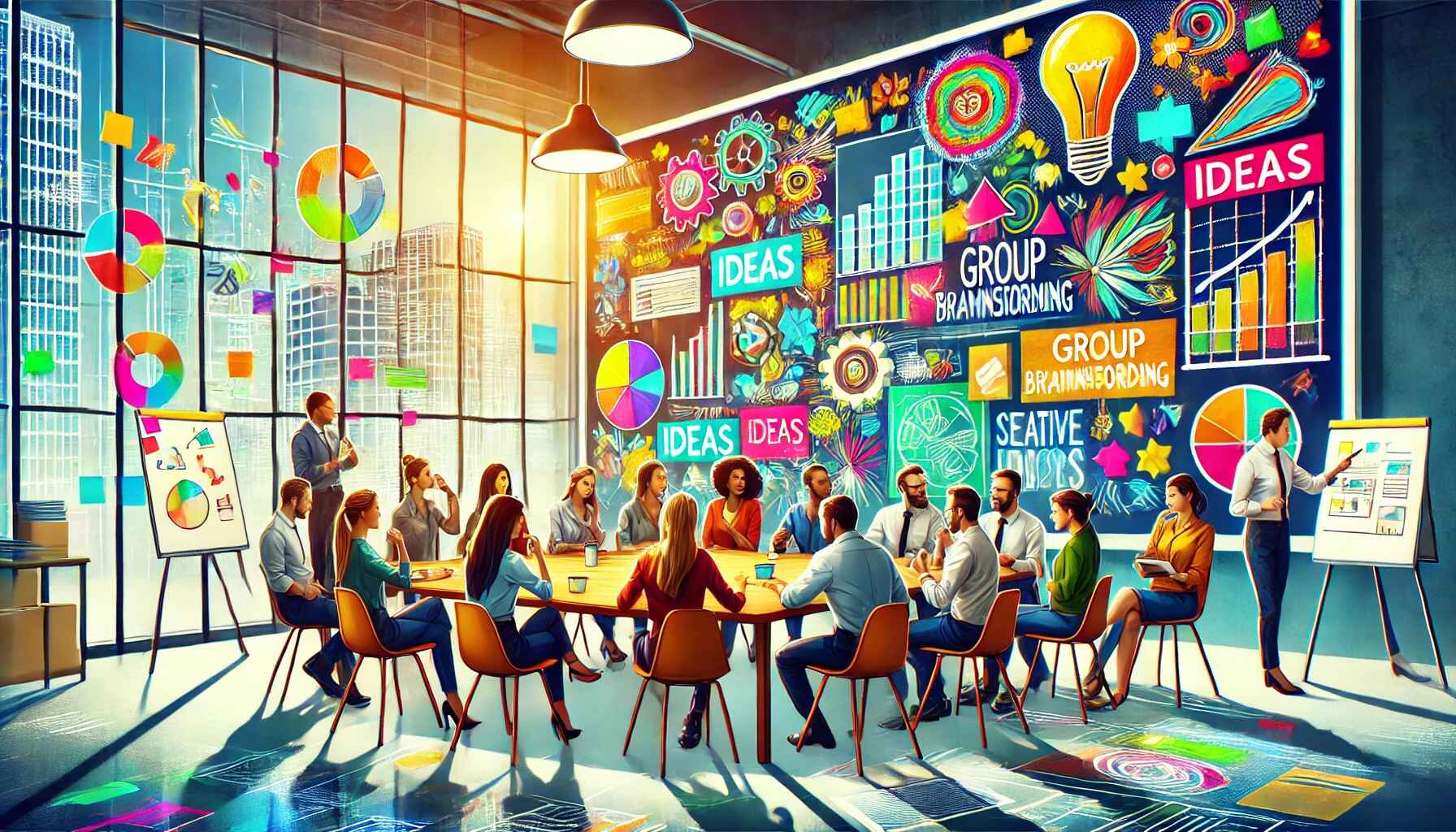The Usefulness of Group Brainstorming Sessions for Leaders
Creativity is one of the most valuable tools a leader can harness, especially when facing challenges that require fresh solutions. The human brain is inherently creative, with different hemispheres contributing uniquely to problem-solving. Yet, even the most seasoned leaders experience moments where ideas don’t flow. This is where brainstorming sessions come into play, providing a structured yet dynamic way to spark innovation and collaboration.
Group brainstorming offers leaders the chance to generate fresh perspectives, explore solutions, and unlock the collective intelligence of a diverse group. Here’s how such sessions can transform leadership strategies and maximize organizational success.
The Unique Value of Brainstorming
Brainstorming thrives on diversity—diverse experiences, industries, and thought processes. Engaging with people outside your immediate circle or field of expertise can reveal insights you might never have considered. Hearing different viewpoints enables leaders to tackle problems from angles they hadn’t previously imagined.
For example, a participant in a recent brainstorming session shared a challenge in providing reliable power for internet towers in a remote area. The solution came from combining ideas like leveraging government green loans and installing solar panels and wind turbines. Such ideas often emerge in groups where participants feel free to propose innovative solutions without fear of judgment.
Similarly, another participant grappling with cultural perceptions in real estate sales found actionable suggestions by targeting international buyers and creating a community-driven marketing approach. These examples highlight the transformative power of brainstorming: it takes isolated problems and uncovers interconnected solutions.
Building a Successful Brainstorming Session
To reap the full benefits of brainstorming, leaders must structure their sessions thoughtfully. A successful session begins with the right mix of participants and a clear framework for discussion. Here’s how you can organize a productive brainstorming session:
Diverse Participants:
Invite individuals from different industries, backgrounds, or departments. The broader the range of experiences, the richer the pool of ideas.Set Clear Objectives:
Define the focus of the session. Are you solving a specific challenge, generating new product ideas, or exploring ways to improve efficiency? Clarity ensures that participants stay aligned.Establish Ground Rules:
Create a safe and respectful environment where everyone feels comfortable sharing ideas. Encourage open-mindedness and refrain from immediate criticism of suggestions.Follow a Structured Process:
Use a framework to guide the discussion. Here’s an effective approach:- Present the Problem (2 minutes): One participant explains their challenge.
- Clarify Questions (3 minutes): Other participants ask questions to understand the problem better.
- Group Brainstorming (10 minutes): The presenter steps back while the group generates ideas.
- Feedback (5 minutes): The presenter returns to hear the proposed solutions.
Create SMART Goals:
After the session, translate ideas into actionable steps. Set specific, measurable, achievable, relevant, and time-bound goals to ensure implementation.Accountability:
In subsequent sessions, have participants share updates on the actions they’ve taken. This reinforces commitment and encourages progress.
Benefits Beyond Problem-Solving
While brainstorming is an excellent tool for addressing specific challenges, its benefits extend far beyond the immediate outcomes.
Enhanced Confidence:
Brainstorming fosters a sense of accomplishment. Participants feel empowered as they generate solutions, share ideas, and collaborate effectively.Networking Opportunities:
These sessions bring together professionals with diverse expertise, often leading to meaningful connections and partnerships. Peers may introduce one another to resources, contacts, or opportunities that extend beyond the session itself.A Flow State:
Group brainstorming often induces a "flow state," where participants are fully engaged, focused, and energized. This collective creativity can lead to breakthroughs that feel almost effortless.Mutual Growth:
A well-structured brainstorming session benefits everyone involved. Each participant gains new perspectives, fresh ideas, and a sense of contribution. This win-win dynamic strengthens bonds and fosters a spirit of collaboration.
Tips for Leaders
Leaders play a pivotal role in setting the tone and ensuring the success of brainstorming sessions. Here are some tips for maximizing the impact of these sessions:
- Embrace Diversity: Seek input from individuals with varying backgrounds, industries, or roles. This diversity fuels creativity and innovation.
- Encourage Curiosity: Foster a culture where questions are welcomed and curiosity is celebrated.
- Stay Open-Minded: Be receptive to ideas, even those that seem unconventional. Often, the most unexpected suggestions lead to the best solutions.
- Lead by Example: Share your own challenges and participate actively. Your openness encourages others to do the same.
Final Thoughts
Group brainstorming sessions are a powerful tool for leaders to unlock creativity, solve complex problems, and foster collaboration. They offer a structured yet dynamic environment where diverse perspectives converge to generate innovative ideas.
Beyond solving immediate challenges, these sessions build confidence, strengthen networks, and promote a culture of shared success. By incorporating brainstorming into your leadership toolkit, you can drive meaningful change and inspire your team to achieve their full potential.
In the end, the true magic of brainstorming lies in its ability to transform ideas into actionable solutions—and to create a supportive space where everyone’s contributions are valued.









